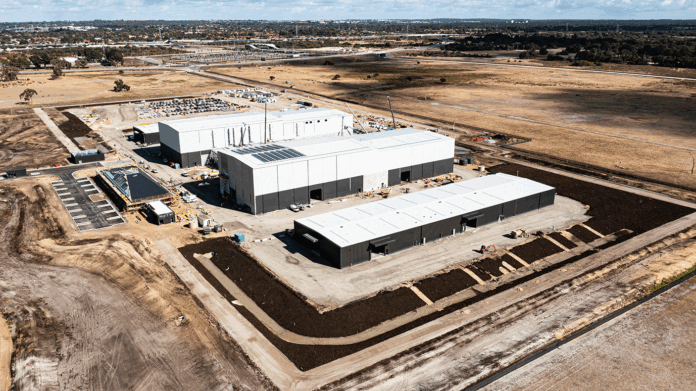WA Government Unveils $5 Million Investment to Boost Local Screen Industry Capacity
Western Australia’s creative sector is set for another turning point. In a bid to propel the state into the national filmmaking spotlight, the Cook Government has announced a A$5 million investment aimed at developing key support services for the local screen industry. This latest funding, delivered via Screenwest’s expanded Targeted Industry Capacity Building Program, is designed to build capacity and reduce Western Australia’s reliance on interstate imports as the state readies itself for the opening of Perth Film Studios in 2026.
A Future-Ready Investment
The investment targets critical sectors within the screen production pipeline. This includes provisions for camera, grip and lighting equipment; rigging and set construction; props and art department services; catering; production support facilities; and special effects. By bolstering these areas, the government hopes to create a more self-reliant and dynamic local industry. The strategic aim is clear: to shift Western Australia’s annual share of national screen productions from a modest one per cent to an ambitious ten per cent within the coming decade.
Minister for Creative Industries, Simone McGurk, emphasised that the funding boost is not only about meeting the emerging demand in the local production services but also about fostering broader economic diversification in a state long known for its resource-led economy. “This investment backs our local screen industry and ensures we are equipped to deliver the service and amenity to match WA’s new state-of-the-art film studio,” the Minister explained.
Aligning with Broader Policy Goals
This announcement forms part of a broader government strategy to diversify Western Australia’s economy and elevate its cultural industries. Historical initiatives, such as the WA Screen Industry Strategy introduced in recent years, have laid the groundwork for this expansion. The state’s commitment to developing a competitive environment for creatives dates back to policy frameworks designed to attract not only domestic but also international film production.
Informed by studies and strategic reviews dating back to 2019, the push to invest in screen industry support services aligns with previous budgets allocating funds towards film studio infrastructure. A 2020 feasibility study, for example, highlighted the economic benefits of stimulating local production, projecting significant job creation and economic returns from increased film activity. This latest injection of funds is expected to complement such established plans and drive further growth in the local market.
Economic Impact and Local Benefits
For local businesses and skilled workers, the investment offers the promise of new opportunities. By focusing on service capacities such as rigging, set construction, and special effects, the funding aims to stimulate local economies. The potential multiplier effect on the supply chain in Western Australia is significant. Local SMEs in regions like Fremantle and Northbridge have already built reputations for quality work in props, construction, and visual effects. With increased demand anticipated as Perth Film Studios opens its doors in 2026, these businesses could see expanded portfolios, increased orders, and the creation of new jobs.
Not only does the scheme directly address the capacity gap in technical and support services, but it also seeks to promote local talent by reducing the reliance on interstate resources. Data from previous Screenwest-supported projects indicate that a substantial portion of production crews has typically been sourced from eastern states. Boosting local service capacity means that WA can ensure that more projects will hire local professionals, thereby contributing to a more sustainable and integrated creative industry ecosystem.
Lessons from Past Initiatives and Comparative Outlook
Western Australia’s drive to establish a competitive screen industry is not without its challenges. Looking back to similar efforts in other states, such as Queensland’s Gold Coast film studio developments or Victoria’s Docklands transformation, there are valuable lessons regarding infrastructure investment and talent development. While these regions have attracted a significant portion of Australia’s film productions through robust incentive packages and established networks, WA’s current share of one per cent indicates a long road ahead.
By investing in local capacity, the government aims to build a stronger competitive edge. However, industry observers note that reaching a ten per cent national share will require not just equipment and service improvements but also substantial efforts in upskilling local labour and ensuring that the local talent pipeline can meet increased demand. Addressing these challenges is critical for the long-term viability of the state’s ambitions in the film and television sectors.
Impact on Cultural Storytelling and Industry Diversity
Beyond economic and technical benefits, the funding initiative also represents a commitment to local storytelling. With Western Australia’s diverse landscape, history, and communities, a robust film industry has the potential to showcase uniquely local narratives. There is a growing interest in productions that highlight Indigenous culture and other local art forms, areas that have historically received limited exposure. Strengthening the support capacities across the board means that more creative voices can be heard, promoting a culturally rich and inclusive media environment.
Future Roadmap
The Perth Film Studios project, due to open in 2026, is widely anticipated as a catalyst for the region’s creative industries. As a purpose-built facility in the Whiteman Park/Malaga area, the studios promise state-of-the-art soundstages and production facilities that are expected to attract major film and television productions from across Australia and beyond. This $5 million investment is a key step towards ensuring that supporting services across WA are ready to support this influx of production activity.
While challenges remain—including the need to scale local skills and maintain sustainable practices in production—the collaborative effort between government, Screenwest, and local industry stakeholders represents a determined move towards a more self-sufficient and globally competitive screen industry in Western Australia.

